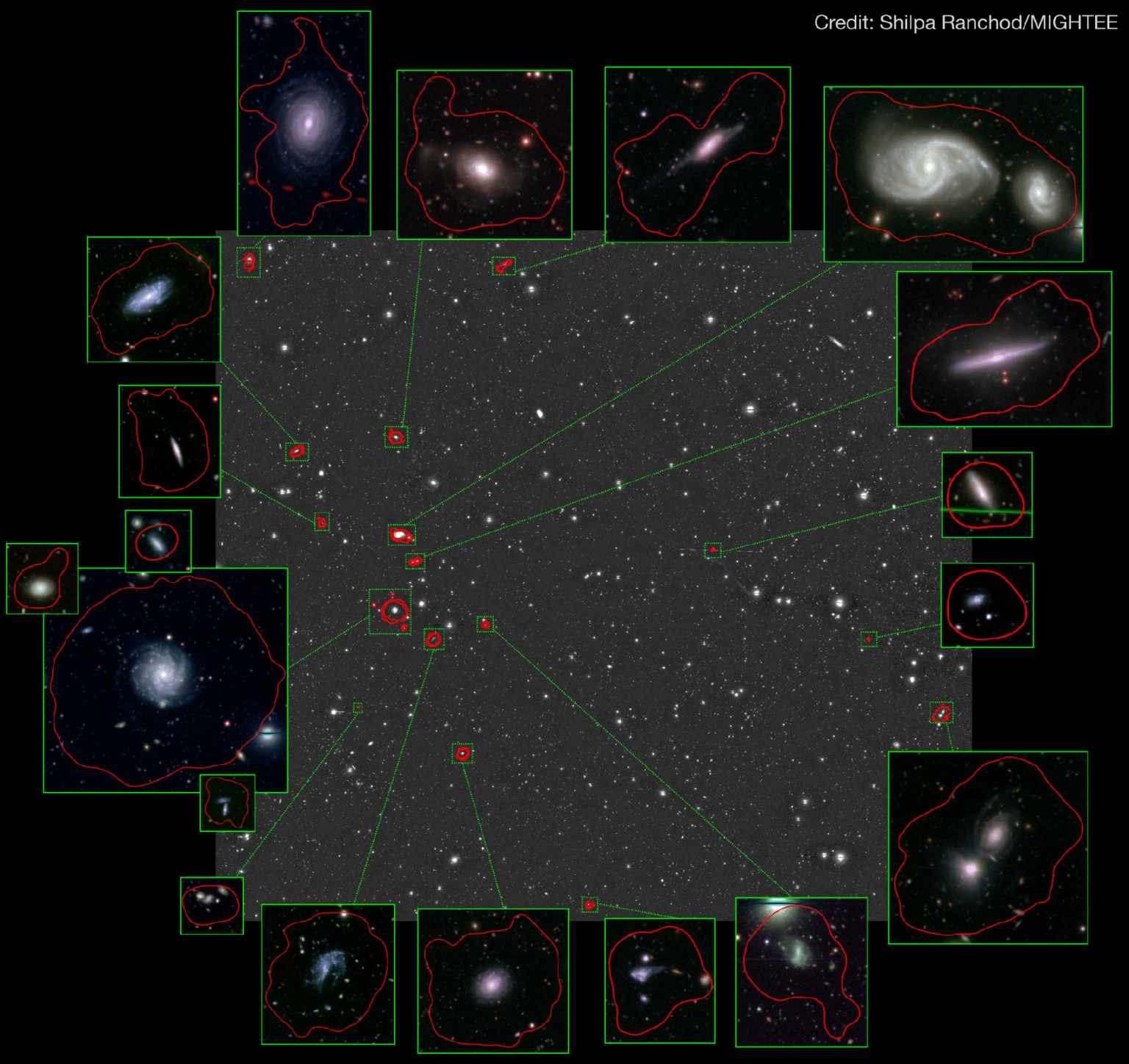MeerKAT discovers a group of galaxies hidden in a well-studied region
Its abundance in neutral hydrogen suggests that it is a group of galaxies in the process of formation
Most galaxies with intense star formation are contained within a cloud of cold neutral hydrogen, which acts as the fuel from which new stars will form. It is a diffuse, extremely faint gas that can only be detected at radio wavelengths and extends beyond the visible region of the galaxy. The observation of this gas allows us to understand the evolutionary processes that take place in galaxies, and a scientific team with the participation of the Institute of Astrophysics of Andalusia (IAA-CSIC) has found, with the MeerKAT radiotelescope, an ideal object of study: the group of galaxies richest in neutral hydrogen known.
"The distribution of neutral hydrogen in these galaxies has revealed interesting perturbed morphologies that suggest that the galaxies in the group influence each other. For example, we found a pair of interacting galaxies that will potentially merge to form a new galaxy with a completely transformed appearance", says Shilpa Ranchod, a researcher at the University of Pretoria who leads the study.

The discovery is part of the MIGHTEE (MeerKAT International Gigahertz Tiered Extragalactic Exploration) legacy project, one of the major surveys being developed with the MeerKAT telescope (South Africa) and involving an international science team. MeerKAT is the South African precursor to the Square Kilometre Array (SKA), which will be the largest scientific infrastructure on the planet, and aims to answer fundamental questions about the formation and evolution of galaxies. Its exceptional sensitivity provides a better understanding of the drivers of galaxy evolution.
This new group of galaxies lies in an area of the sky that has been studied in depth with other radiotelescopes, but only with MeerKAT has it been possible to observe the structure of the group so clearly. The environment of galaxies greatly affects how galaxies grow and evolve, and observations of neutral hydrogen with MeerKAT offer a new window into these structures.
"This is just a preview of what the MeeeKAT legacy project MIGHTEE will show us, and of the discoveries we will make with the SKA. This is a case of special interest for the line of research I coordinate at the IAA: unlike the dense groups of galaxies with a high deficiency in atomic gas with which we usually work and which, as we proposed, would be more evolved, in this case, a lot of gas has been detected, which suggests that we are dealing with a group in an early evolutionary phase, that is, a group in formation", says Lourdes Verdes-Montenegro, a researcher at the IAA who is participating in the study and coordinating the Spanish participation in the SKA.
This discovery will help to lay new foundations for understanding how galaxies assemble into groups and transform themselves through interaction with their environment. MeerKAT is an important step in the direction of the SKA, providing insight into future scientific projects and examples of how to overcome the many technical challenges involved in its full scientific potential.
S. Ranchod et al. "MIGHTEE-HI: Discovery of an HI-rich galaxy group at z = 0.044 with MeerKAT". Monthly Notices of the Royal Astronomical Society, July 2021. https://arxiv.org/abs/2107.01237
Instituto de Astrofísica de Andalucía (IAA-CSIC)
Unidad de Divulgación y Comunicación
Silbia López de Lacalle - sll[arroba]iaa.es - 958230676
https://www.iaa.csic.es
https://divulgacion.iaa.csic.es

